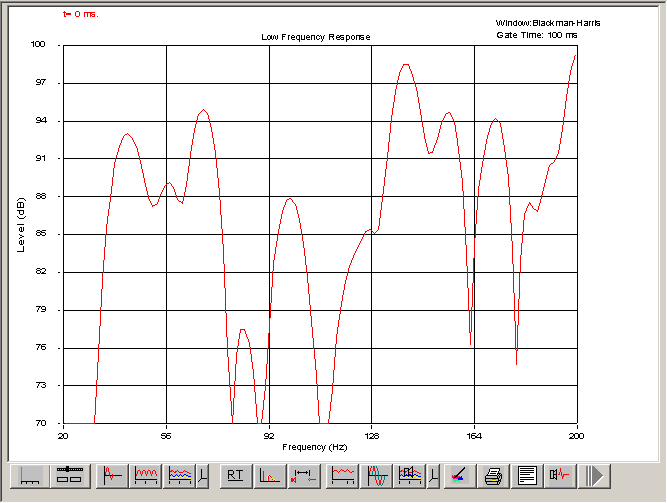David Matz
Well-known member
Happy Holidays!
A few question for our acoustic experts or anyone who can share his experiences. If the answer is “depends” please provide example scenarios how things may work in different ways. Please feel free to answer any or all of these. Thanks!
<o></o>
What’s the difference acoustics-wise/ sonically between mineral wool vs. 703 or 705 fiberglass vs acoustic cotton?
How does one deal with windows/ glass? Does bass escape through the windows? What happens to the higher frequencies? What material can be used to deal with the higher frequencies, while letting the bass get out?
<o></o>
Is there something scientific to golden ratio room size, or is myth/ wishful thinking?
Why is a panel on the corner much more effective than hanging on the wall?
<o></o>
Is a panel hanging on the wall more effective than one standing on the floor?
<o></o>
How much space between the wall and the panel is optimal? If the panel is out more than optimal, is it less effective?
<o></o>
When a panel is straddling a corner, does the empty space reduce the panel’s effectiveness?
If speakers are 12 feet into the room in a large room, does one "need" to absorb the back wave? What is the rule of thumb for moving the speaker into the room so the back wave will be less of a factor?
<o></o>
What size is a large room? What size is a small room?
<o></o>
Is there a room size where acoustic treatments are not necessary? Some people in a big room (27 x25 x10, for example) say they do not need room treatments. Could this be true?
<o></o>
Can a well treated small room ever sound as good as a well treated big room?
<o></o>
Are open doors or openings into other rooms an effective way to deal with bass issues? How big of an opening starts messing up the soundstage?
<o></o>
Do blankets, curtains, or cloths help reduce high frequencies or is a myth?
<o></o>
What does an equalizer do vs. acoustic panels? Do equalizers add value? What needs to be in place for them to make the biggest difference?
<o></o>
What is the difference between the different products, say Rives PARC vs. Audissey?
<o></o>
If one has Bill Gates money, how does one make the ultimate listening room?
<o></o>
If one does not quite have Bill Gates money, but still has a good budget to create a room, what can be done to a room? Is it using acoustic panels on all surfaces instead of floors, ceilings and drywall, or is it more than that?
A few question for our acoustic experts or anyone who can share his experiences. If the answer is “depends” please provide example scenarios how things may work in different ways. Please feel free to answer any or all of these. Thanks!
<o></o>
What’s the difference acoustics-wise/ sonically between mineral wool vs. 703 or 705 fiberglass vs acoustic cotton?
How does one deal with windows/ glass? Does bass escape through the windows? What happens to the higher frequencies? What material can be used to deal with the higher frequencies, while letting the bass get out?
<o></o>
Is there something scientific to golden ratio room size, or is myth/ wishful thinking?
Why is a panel on the corner much more effective than hanging on the wall?
<o></o>
Is a panel hanging on the wall more effective than one standing on the floor?
<o></o>
How much space between the wall and the panel is optimal? If the panel is out more than optimal, is it less effective?
<o></o>
When a panel is straddling a corner, does the empty space reduce the panel’s effectiveness?
If speakers are 12 feet into the room in a large room, does one "need" to absorb the back wave? What is the rule of thumb for moving the speaker into the room so the back wave will be less of a factor?
<o></o>
What size is a large room? What size is a small room?
<o></o>
Is there a room size where acoustic treatments are not necessary? Some people in a big room (27 x25 x10, for example) say they do not need room treatments. Could this be true?
<o></o>
Can a well treated small room ever sound as good as a well treated big room?
<o></o>
Are open doors or openings into other rooms an effective way to deal with bass issues? How big of an opening starts messing up the soundstage?
<o></o>
Do blankets, curtains, or cloths help reduce high frequencies or is a myth?
<o></o>
What does an equalizer do vs. acoustic panels? Do equalizers add value? What needs to be in place for them to make the biggest difference?
<o></o>
What is the difference between the different products, say Rives PARC vs. Audissey?
<o></o>
If one has Bill Gates money, how does one make the ultimate listening room?
<o></o>
If one does not quite have Bill Gates money, but still has a good budget to create a room, what can be done to a room? Is it using acoustic panels on all surfaces instead of floors, ceilings and drywall, or is it more than that?




